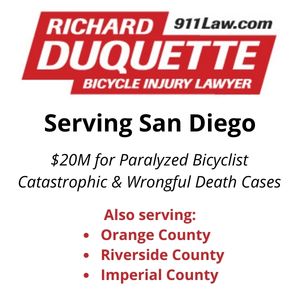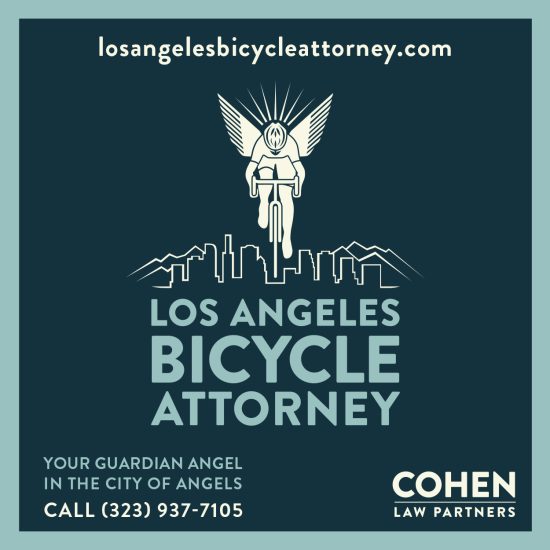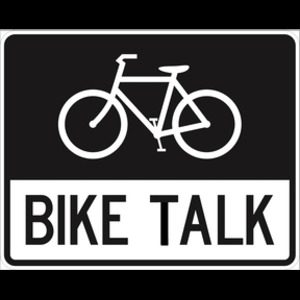
Once again, a bicyclist has been killed on a fundraising ride across the US.
Thirty-two-year old bike rider James Dobson was 44 days into a cross-country ride to raise $10,000 to fight childhood cancer when he was apparently run down from behind in Mississippi.
His GoFundMe page has already beaten that goal, bringing in over $14,000 in the last month — some of that in the last few days as word of his death has gotten out.
Police blamed low visibility and a hill that obscured view of the roadway for the crash. Needless to say, no charges have been filed.
The last entry on Dobson’s vlog was made on Monday, one day before his death.
There’s something seriously wrong when anyone has to risk their life just to ride a bicycle, whether across the country or around the block.
Photo from James Dobson’s GoFundMe page.
………
No bias here.
Melissa McCurley forwards a story from last month, where police at Purdue University bent over backwards to exonerate a driver who left-crossed a bike rider.
Investigators somehow concluded that both the victim and the driver had the right-of-way, because both had green lights.
Even though that’s technically impossible, since right-of-way rules require drivers to yield to oncoming vehicles before turning.
………
Nothing like landing on your feet after an ill-considered pass.
No, literally.
………
Bike-riding BBC broadcaster Jeremy Vine gets caught in a squeeze play, barely avoiding a dooring at the same time he’s passed too close by a van driver.
I was ready for you, mate.
(This morning in London). pic.twitter.com/l9komcAqm9
— Jeremy Vine (@theJeremyVine) November 13, 2018
………
A group of Russians disguised themselves as a cardboard school bus in an effort to get around a ban on pedestrians on a highway bridge.
Thanks to Norm Bradwell for the link.
………
This is what dedicated bus lanes — which bicyclists are also allowed to use — look like in the City of Angels.
Which explains why you don’t see a lot of bikes there.
https://twitter.com/wscism/status/1062887335434477568
Maybe if Los Angeles was as progressive as the city seems to think it is, they might deputize a few bike riders to deal with blocked bus lanes and bike lanes.
Like a DC councilmember is actually proposing.
The bill creates a pilot program, "Citizen Bike Safety Enforcement Pilot Program," authorizing DDOT to create a training program and an app allowing up to 10 DC residents to photograph vehicles blocking bicycle lanes, and that photograph would be used to issue a citation. #bikedc
— CM Allen's Team (@CMCharlesAllen) November 13, 2018
Although the odds of that happening here would have to improve significantly just to reach zero.
………
You might want to save this advice for those three or four days each year when we actually have winter here in Los Angeles.
British time trial champ Alex Dowsett offers ten tips for better winter riding.
And Canadian Cycling Magazine provides five ways to have fun on your bike while it’s wet and cold.
………
Bicycling takes a look at the real world benefits of bicycling, and how it’s helped change people’s lives.
- A 39-year old woman with Parkinson’s says gravel racing helps her cope.
- A Texas man took up bicycling to overcome his severe anxiety and lost 110 pounds in the process.
- Race photos taken 14 months apart show a ‘cross rider’s transformation, losing 30 pounds after taking up the sport.
………
Local
LA Weekly says the My Figueroa Complete Streets project is officially open, and traffic is flowing smoothly.
A meeting will be held tonight to discuss street improvements on Reseda Blvd, which could use them.
Bike SGV is looking for a part-time outreach assistant.
Speaking of Bike SGV, the San Gabriel Valley bike advocacy group is offering a free Traffic Safety 101 class in Duarte this Saturday.
State
Heartbreaking story from San Diego, as the public television station investigates the pain caused by bike safety delays for people affected by traffic deaths. At least San Diego is doing something to improve safety, unlike a certain city a few hours to the north.
San Diego County has received a $75,000 grant for bicycle and pedestrian safety education. Which is great, as long as they teach drivers how not to kill us, instead of just teaching us how to not get run over.
The San Diego Padres host their annual Padres Pedal the Cause fundraising ride to fight cancer this Saturday.
A driver describes how a woman slammed into the side of her van when the brakes on her bike failed on a steep Cambria hill.
A Lompoc driver cuts out the middleman, and crashes into a bike shop and its bicycles before they’re even sold. Thanks to Michael Young for the heads-up.
Plans to remake a San Mateo avenue could include a bike path, protected bike lanes, regular bike lanes and sharrows. Sounds like the engineers couldn’t decide what treatment to use, so they just went with all of the above.
A temporary Menlo Park bike lane will be made permanent after it succeeded in getting drivers out of their cars and onto bicycles.
The rich get richer. San Francisco is building a one-mile East Bay bike path connecting with the city’s San Francisco Bay Trail, adding to what will eventually be a 500-mile pathway. Yes, 500 miles around the bay, which is a little less than ten times longer than the LA River bike path, which will be the longest path in the Los Angeles area when and if it ever gets finished.
A Sacramento driver with an extensive criminal record has been arrested in the hit-and-run death of a 14-year old boy as he walked to school, insisting it was an accident and he’s “not a monster.” I beg to differ; anyone who could leave another human being to die in the street — especially a kid — deserves that description. And it’s a crash, not an accident, which implies no one was at fault.
National
The wild west days of dockless e-scooters may be about to end, as at least a dozen states will take up proposals to regulate them.
Even if self-driving cars work, they could prevent walkable, livable — and yes, bikeable — communities.
Bike lawyer Bob Mionske completes his look at how to protect yourself from liability for group rides.
Bicycling offers advice on how to avoid dehydration on your bike, saying if you wait until you’re thirsty to drink, it’s already too late.
A new survey shows Americans have fallen out of love with their cars, especially Millennials, who would rather do something more productive.
Two of the three Portland men who booby trapped a bike path, injuring a woman bicyclist, appeared in court to file not guilty pleas — despite telling the police they did it to “fuck with the homeless” because “we don’t want them around here.”
Residents of Washington’s Bainbridge Island rejected a tax increase to improve access for bike riders and pedestrians.
Joe Linton sends word that Arizona’s new Democratic senator is one of us.
Bike-friendly Madison WI is looking for a new pedestrian bicycle administrator. Which sounds like someone in charge of making people walk their bikes. But probably isn’t.
Now that’s more like it. Plans for a 1,015-space parking garage in New Haven CT have been revised to include 240 spaces for bicycles. Now if they just flipped those numbers, they might be onto something.
Be glad you’re not in New York, where the NYPD belies the city’s bike-friendly image by parking in the bike lane to threaten bicyclists.
International
Carlton Reid says the 70-year old film classic Bicycle Thieves, aka The Bicycle Thief in the US, shows how easily a stadium can be emptied — if the traffic is on bicycles.
Road.cc offers everything you always wanted to know about tandems, but were afraid to ask.
The Guardian asks what a smog-free city would look like. Hint: a lot of people on foot and bikes, and roads converted to parks.
A new study rebuts the rebuttal of a 2007 study, confirming that drivers pass riders who wear bicycle helmets closer than those without.
Canadian courts set a high bar for conviction on charges of dangerous driving, allowing killer drivers to walk without jail time.
Apparently, it’s open season on Toronto bicyclists, after a cop doored a bike rider while parked in a bike lane gets off without even a slap on the wrist; investigators write it off as just a “momentary lack of attention.”
A Nova Scotia man is keeping children’s wheels turning in Uganda by shipping spare bike parts to the African country.
An English coastal town spent the equivalent of $15,000 to install speed cameras on a beachfront bike path just to tell riders they’re going too fast.
The Grinch is real. A parliament member on Britain’s Guernsey Island proposes freezing gas taxes, and making up for it by taxing bike riders the equivalent of up to $260 a year.
Paris reaches an agreement with surrounding towns to ban all diesel-fueled vehicles built before 2010 within seven years.
A Palestinian man has been sentenced to four months in prison by an Israeli military court for the crime of riding his bicycle during a protest.
Experts say most Aussie drivers either don’t know about the country’s equivalent to the three-foot passing law, or don’t care. My money is on the latter.
Good piece from an Aussie writer, who says he used to hate bicyclists and thought they shouldn’t be allowed on the roads — until he became one. Now he fears the bigoted, dehumanizing comments his wife and sister read after a rider is killed.
Hangzhou, China, with a population of 10 million people, is fighting chronic air pollution by eliminating the use of coal, and returning to the age of bicycles.
Competitive Cycling
About time. Women’s WorldTour riders will receive maternity leave and minimum salaries for the first time.
Plans by ex-Tour de France champ Floyd Landis to sponsor a Canadian cycling team may go up in smoke, thanks to Canadian cannabis laws.
American cycling legend Nelson Vails describes how he became the first African American Olympic cycling gold medalist. And how he rode 1,000 miles with congestive heart failure, nearly dying next to an Iowa cornfield.
Now you can buy the high tech bike chain developed for the British Cycling Team for your own fixie. As long as you’re willing to spend $350.
This is what a 184 mph bicycle looks like.
Finally…
Build your own DIY bespoke bamboo bike. No, that wasn’t Taylor Swift on a Lime scooter.
And gotta catch ’em all — even if that means mounting 15 smartphones on your handlebars to play Pokemon Go.
………
We’re just one week away from the official kickoff for the Fourth Annual BikinginLA Holiday Fund Drive.
But in the meantime, you can support this site by telling your favorite local bike shop, donut shop, microbrewery or any other kind of business to support LA’s best bike news and advocacy by advertising on BikinginLA.
Just tell them to contact ads @ bikinginla dot com for a rate sheet or more information.




















